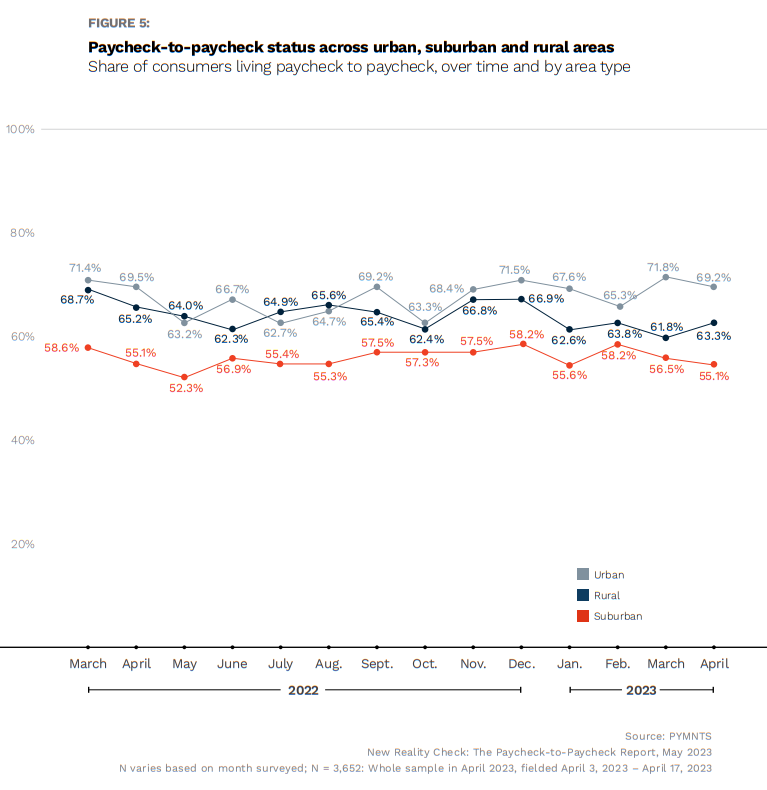
The ongoing cost-of-living crisis continues to affect consumers across the United States, and having higher incomes does not necessarily shield one from feeling the financial pinch.
The ‘New Reality Check: The Regional Divide Edition’ report by PYMNTS and LendingClub offers a comprehensive and accurate overview of the current consumer finance landscape in the U.S., with insights gathered from a survey of nearly 3,700 American consumers, as well as analysis of other economic data.
According to the study’s findings, city dwellers — most of whom fall within higher income brackets — are especially feeling the brunt of this financial pressure.
In fact, despite 36% of urban dwellers earning over $100,000 per year, about 70% of them are caught in a cycle of living paycheck to paycheck — 25% more compared to their suburban counterparts.
Unsurprisingly, however, 63% of rural consumers find themselves in a similar situation managing tight budgets. This can be attributed to only 16% of high-income earners living in rural areas compared to 29% of low-income individuals.
These disparities could also be attributed to the high percentage of millennials residing in the city (48%), as well as the larger proportion of baby boomers and seniors, many of whom are on fixed incomes due to retirement, residing in rural regions (32%).
Overall, the data reveals that income isn’t the sole determining factor of whether a consumer is better able to manage financial difficulties. Per the data, distinct financial lifestyle trends among consumers residing in urban, suburban, and rural areas across all U.S. regions imply that location influences how and why consumers find themselves living paycheck to paycheck.
For instance, although the distribution of consumers living paycheck to paycheck has been mostly consistent across different regions in the U.S., the Western part of the country stands out with the most significant year-over-year increase.
As the report noted, “the share of those living in the West did increase from 59% in April 2022 to 64% in April 2023, indicating that the rising cost of living has affected consumers in this region the most.”
